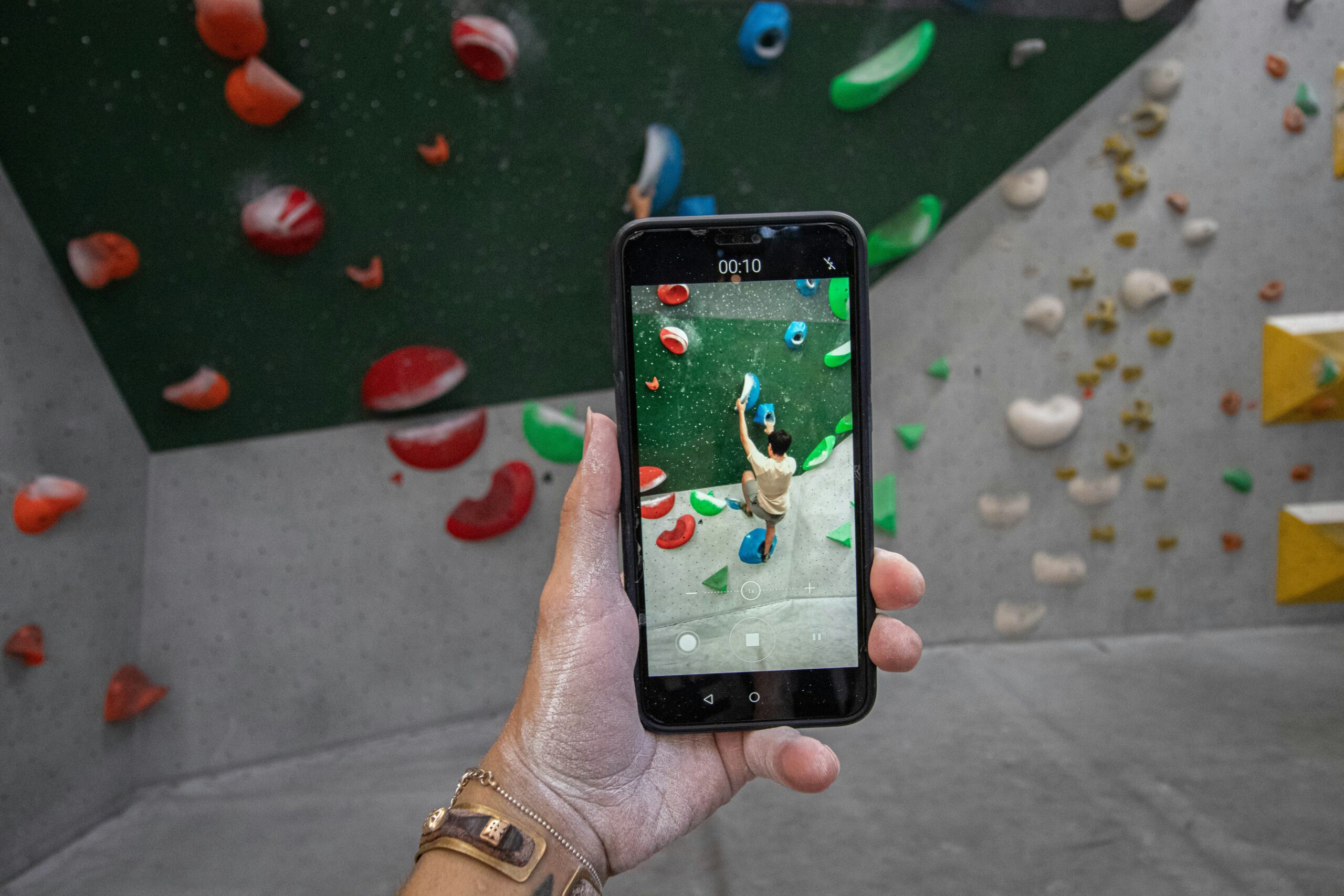The significance of smartphone apps for the elderly cannot be overstated. As technology continues to evolve, it becomes increasingly integral to the lives of individuals across all age groups, particularly for the older population. The advent of smartphones has not only made technology more accessible but has also empowered the elderly to engage with it in meaningful ways. Utilizing smartphone applications can greatly enhance communication, streamline health management, and simplify daily tasks, fostering a greater sense of independence and connection.
One of the primary advantages of smartphone apps for elderly users is the enhancement of communication. Applications such as messaging and video calling facilitate staying in touch with family and friends, thereby alleviating feelings of isolation that are often experienced in later years. This is especially crucial as many elderly individuals may face mobility challenges, making traditional face-to-face interactions less frequent. Smartphone apps allow them to maintain their social networks more effortlessly, strengthening relationships and emotional well-being.
Moreover, managing health is a vital aspect of aging, and technology provides practical solutions to this challenge. Numerous health management apps are available, which can assist the elderly in tracking medication schedules, monitoring vital signs, and managing appointments. These applications empower seniors to take an active role in their health care, ultimately improving their quality of life. In addition to health tracking, smartphone apps can also help them organize their daily routines, including reminders for daily tasks or activities, thereby enhancing their overall productivity and self-sufficiency.
Through the integration of smartphone apps, the elderly can not only embrace technology but also significantly improve their day-to-day experiences. The capacity to communicate, manage health, and execute daily tasks with ease presents a compelling case for encouraging the use of smartphone applications within this demographic.
Understanding the Digital Divide: Challenges Faced by Seniors
In today’s technology-driven world, the adoption of smartphone apps for elderly individuals often presents numerous challenges. Many seniors encounter difficulties stemming from their limited familiarity with digital devices. For those who did not grow up with technology, the learning curve can be steep. The interface of many smartphones, while designed to be intuitive, can still be overwhelming for an older generation that may not have had prior exposure to the digital realm. Consequently, elderly users may feel frustrated or intimidated, leading to a reluctance to embrace useful smartphone applications that could enhance their daily lives.
Moreover, concerns surrounding security and privacy loom large for seniors. Many older adults are apprehensive about sharing personal information online or downloading unknown applications. This fear can create a barrier to accessing smartphone apps for elderly individuals that offer essential services, such as telemedicine appointments or grocery delivery. Trusting technology requires a level of understanding that some seniors may lack, highlighting the necessity for user-friendly designs and education that prioritize privacy and security.
Physical limitations also significantly impact how seniors engage with technology. Impaired vision can hinder their ability to read small text on screens, while reduced dexterity may make it challenging to navigate mobile devices effectively. Older adults might find it difficult to use touchscreens or even hold a smartphone comfortably. These factors can prevent them from fully benefiting from the wide array of applications available to them, ultimately exacerbating the digital divide. Addressing these multifaceted challenges requires tailored strategies that not only introduce smartphone apps for elderly users but also create supportive environments that foster confidence and capability in using technology.
Top Communication Apps: Staying Connected with Family and Friends
As technology continues to evolve, smartphone apps for elderly users have become instrumental in maintaining connections with family and friends. With a variety of communication applications available, older adults can engage in meaningful conversations, share moments, and stay updated with their loved ones in an intuitive manner. Some of the top recommended apps include video calling platforms, messaging services, and social media networks that are especially tailored for senior users.
Video calling apps such as Zoom and FaceTime have surged in popularity due to their ease of use and the sense of closeness they offer. Zoom presents a user-friendly interface that allows seniors to join video calls with just a few taps. It is particularly beneficial for family gatherings and virtual meet-ups, making it easier for older adults to see and interact with multiple family members simultaneously. FaceTime, available on Apple devices, holds a reputation for its seamless integration with iOS, enabling simple access to video calls with contacts saved in the user’s phone, thus preventing confusion and enhancing the user experience for elderly individuals.
Messaging platforms like WhatsApp also provide a straightforward way for seniors to communicate with family and friends. The app offers features such as voice messaging and photo sharing, which can be particularly engaging for older adults who may not feel comfortable typing long texts. Additionally, WhatsApp supports group chats, allowing seniors to stay in touch with multiple relatives at once, fostering a sense of community and support.
Social media sites, particularly Facebook, offer another avenue for elderly users to remain connected. The platform provides a familiar environment where seniors can browse family updates, view photos, and share their own experiences. Facebook’s user-friendly layout and features, such as notifications and ease of posting, make it an accessible tool for older adults looking to stay socially active. Overall, the integration of these communication apps into the daily lives of seniors significantly enhances their ability to connect with the world around them.
Health and Wellness Apps: Managing Your Health Effectively
As technology continues to evolve, smartphone apps for elderly users have emerged as essential tools for enhancing health and wellness management. One of the primary benefits these applications offer is the ability to set medication reminders. Many seniors face challenges in remembering when to take their medications. Apps like Medisafe and MyTherapy allow users to input their medication schedules and receive timely alerts, ensuring adherence to prescribed treatments. This feature promotes better health outcomes by reducing the incidence of missed doses.
Another significant aspect of health management is the availability of telehealth services. With the rise of virtual healthcare, elderly users can easily consult healthcare professionals without the need for transportation. Apps such as Doctor on Demand and Amwell facilitate virtual consultations, offering a convenient alternative to in-person visits. This is particularly beneficial for those with mobility issues or those living in remote areas, as they can access care from the comfort of their homes.
Moreover, fitness tracking apps play a vital role in encouraging physical activity among seniors. Applications like MyFitnessPal and Fitbit not only allow users to monitor their activity levels but also provide personalized workout plans that cater to varying physical capabilities. These apps are designed with user-friendly interfaces, making it easy for seniors to track their progress and stay motivated toward achieving their fitness goals.
Lastly, mental wellness is a crucial area that should not be overlooked. Mindfulness and meditation apps such as Calm and Headspace offer guided sessions tailored to reduce anxiety and enhance overall mental health. These applications encourage seniors to engage in relaxation techniques, which can significantly improve their quality of life.
In conclusion, health and wellness apps for elderly individuals are critical in managing their health effectively. With features that support medication adherence, telehealth services, activity monitoring, and mental wellness, these smartphone apps contribute to a healthier and more active lifestyle for seniors.
Safety and Emergency Apps: Peace of Mind for Seniors and Their Families
As the adoption of technology increases, safety and emergency smartphone apps for elderly users have become indispensable tools that contribute to their security and well-being. These applications offer essential features that address the unique needs of seniors, providing reassurance not only to them but also to their families. With a wide range of options available, it is vital to explore some of the most effective safety apps designed specifically for older adults.
One of the major categories within safety apps is emergency contact applications. These apps enable seniors to easily access and alert their emergency contacts with just one tap, ensuring rapid assistance when needed. Many emergency contact apps allow users to customize their contact list, so they can quickly reach family members, friends, or medical professionals in case of a sudden illness or accident. The simplicity of these applications minimizes any potential technological anxiety that elderly users might experience, allowing them to seek help efficiently.
An additional safety feature prevalent in smartphone apps for elderly individuals is the personal safety alarm. These apps typically include sirens or alerts that seniors can activate in moments of distress, notifying their contacts or emergency services instantly. Moreover, several of these apps incorporate GPS tracking services, enabling family members to monitor the whereabouts of their loved ones. This location tracking capability provides parents, children, and caregivers with an added layer of comfort, ensuring that elderly individuals can maintain some independence while remaining connected to those who care for them.
In the landscape of smartphone apps tailored for the elderly, safety applications significantly contribute to creating a secure environment for seniors. These tools not only safeguard against emergencies but also promote a sense of empowerment and reliability, allowing elderly individuals to navigate their daily lives with confidence. By equipping seniors with advanced technology that is designed to address their safety concerns, families can enjoy peace of mind knowing that help is always just a tap away.
Lifestyle and Utility Apps: Simplifying Daily Tasks
As the world increasingly relies on technology, smartphone apps for elderly users are becoming essential tools to enhance independence and streamline daily tasks. Lifestyle and utility apps are designed to simplify routine activities, making them accessible for seniors who may not be as tech-savvy. These applications cater to various needs, including grocery shopping, meal planning, and transportation services.
Grocery shopping apps have transformed the way elderly individuals manage their food necessities. Platforms like Instacart or Walmart Grocery allow users to browse products from local stores, order groceries online, and have them delivered to their doorstep. This feature can significantly reduce the physical strain of grocery shopping while ensuring that seniors have access to fresh ingredients. Moreover, many of these apps offer user-friendly interfaces, enabling seniors to quickly learn how to navigate them comfortably.
Meal planning apps also play a pivotal role in promoting healthy eating habits. Applications such as Mealime provide recipe suggestions tailored to dietary preferences and nutritional requirements. This simplifies meal preparation and encourages seniors to enjoy cooking without the stress of planning. Additionally, these applications often include shopping lists, making it easier for users to gather all necessary ingredients.
Transportation services, including Uber and Lyft, have revolutionized mobility for the elderly. These apps allow seniors to request rides at any time, providing them with greater freedom to attend appointments, visit friends, or participate in social events. By eliminating the need for personal vehicles and driving, these services enhance accessibility and reduce the logistical challenges often faced by older adults.
In conclusion, lifestyle and utility apps for elderly individuals significantly enhance their quality of life. By simplifying everyday tasks and increasing independence, these smartphone applications empower seniors to navigate their environment more effectively.
Educational Apps: Lifelong Learning and Skill Development
As technology continues to advance, educational smartphone apps for elderly users have emerged as invaluable resources for lifelong learning and skill development. These applications cater to various interests, allowing seniors to explore new hobbies, acquire fresh knowledge, and maintain cognitive engagement. By leveraging these tools, older adults can enrich their lives with exciting educational experiences that go beyond traditional methods.
For those interested in acquiring new skills, platforms like Udemy and Coursera offer a wide range of courses that cover various subjects, from cooking and photography to language learning and computer skills. These smartphone apps for elderly individuals are designed with user-friendly interfaces, making navigation simple and straightforward. Users can learn at their own pace, access instructional videos, and even earn certificates upon completion of courses, which can motivate them to continue exploring their interests.
In addition to skill acquisition, creative hobbies have also found a space in educational applications. For instance, apps that focus on crafting, painting, or writing can inspire seniors to engage in artistic pursuits. Activities like digital painting apps or online writing platforms allow for self-expression while promoting mental creativity. Such endeavors can lead to greater satisfaction and emotional well-being, which are essential for healthy aging.
Mental exercises have gained popularity among smartphone apps for elderly users. Applications like Lumosity or Brain Age feature engaging puzzles, memory games, and logic challenges designed to stimulate cognitive function. Regular brain exercises can help seniors maintain mental sharpness, counteract age-related decline, and keep their minds active and engaged. These platforms not only provide entertainment but also support overall brain health, making them a perfect addition to daily routines.
In conclusion, educational smartphone apps for elderly individuals play a crucial role in facilitating continuous learning, skill acquisition, and cognitive development. With a plethora of choices available, seniors can embrace technology as a pathway to personal growth and enrichment in their daily lives.
Tips for Seniors: How to Choose and Use Apps Efficiently
As seniors increasingly turn to technology for assistance, choosing suitable smartphone apps becomes paramount. Understanding how to navigate the app landscape can significantly enhance both the experience and the utility of these digital tools. The first step involves identifying specific needs and preferences. Seniors should consider what activities they want to accomplish with their mobile devices, such as communication, health monitoring, or entertainment.
Navigating app stores can be daunting for first-time users, but it can be simplified by utilizing built-in search features. It is recommended to use keywords that align with one’s interests, like “health apps for elderly” or “communication apps for seniors.” By typing in these phrases, seniors can quickly narrow down their options. Once they identify potential apps, reading user reviews becomes crucial. Reviews provide insights into usability, especially from the perspective of other seniors. Attention should be paid to comments on interface design, as an intuitive layout is essential for effective use.
Once an app is chosen, installation and registration processes can vary. Seniors may seek assistance from family members for these initial steps. After installation, it is beneficial to dedicate time to learn the app’s functionalities. Many apps offer tutorials or help sections; these resources can be invaluable in understanding how to utilize features fully. Furthermore, engaging with instructional videos or articles can also enhance comprehension. It is essential for seniors to remember that reaching out for support is perfectly acceptable—whether from family, friends, or even customer service teams associated with the app.
Regular practice and exploration are key. Seniors should not hesitate to experiment with different features of the smartphone apps for elderly users. Gradually, proficiency will grow, and technology will increasingly become a valuable tool in their daily lives.
Conclusion: Embracing Technology for a Better Quality of Life
As we have explored throughout this article, the integration of smartphone apps for elderly individuals provides numerous benefits that can substantially enhance their daily lives. The digital landscape has evolved, offering various applications designed specifically to cater to the needs of older adults, focusing on ease of use and access to essential features that promote independence and connectivity. By utilizing these innovative tools, elderly users can stay connected with family and friends, manage their health effectively, and engage in enriching activities that contribute to their overall well-being.
One of the primary advantages of smartphone apps designed for seniors is the empowerment they provide. These applications can help older users maintain their autonomy by enabling them to manage daily tasks, appointments, and even grocery shopping from the convenience of their devices. Furthermore, many smartphone apps for elderly individuals offer features that encourage social interaction, combating feelings of isolation and loneliness which can be prevalent in this demographic. From video calling to social media platforms, these technologies foster deeper connections with loved ones and communities.
In addition, health management apps play a crucial role in helping elderly users monitor their medical conditions, track medications, and maintain regular health check-ins. Adopting smartphone solutions in this realm not only streamlines health management but also reassures users by allowing them timely access to medical advice or emergency services when needed. It is clear that embracing smartphone technology is not merely a trend, but a meaningful step towards improving the quality of life for elderly individuals.
Emphasizing the importance of learning to navigate these smartphone apps for elderly users, it becomes evident that with some guidance and practice, the benefits far outweigh the challenges. As technology continues to advance, so too can the experiences of our senior population, leading to a future where they can enjoy greater independence and enriched lives.



